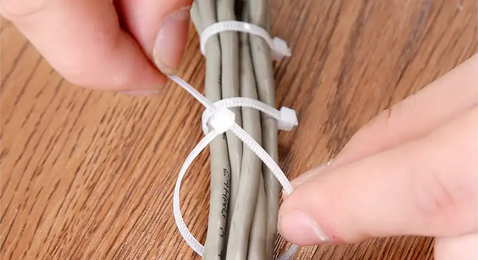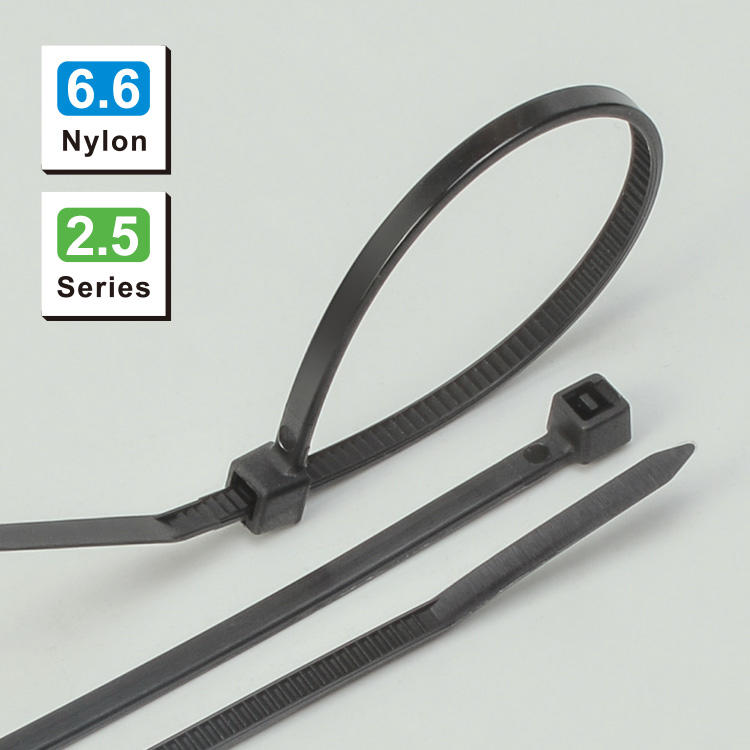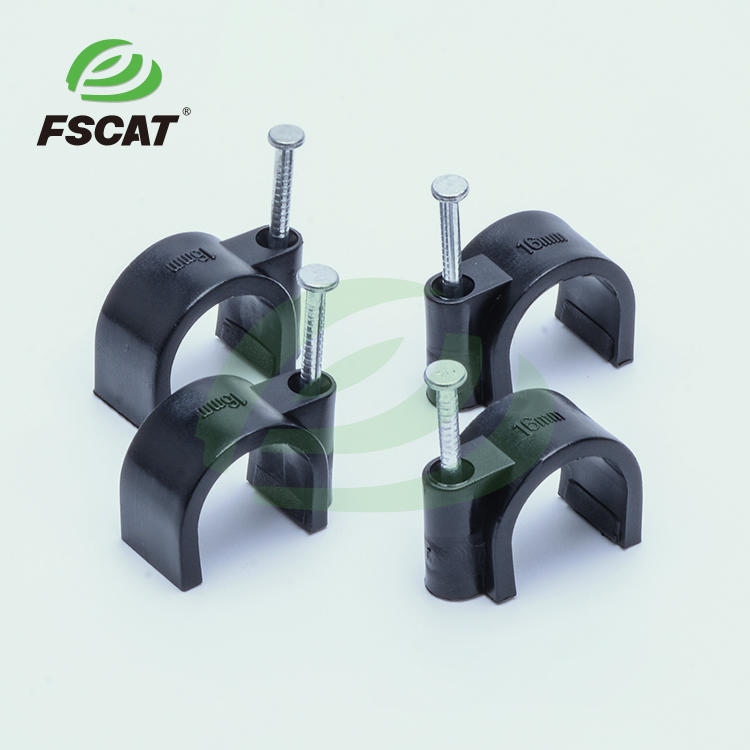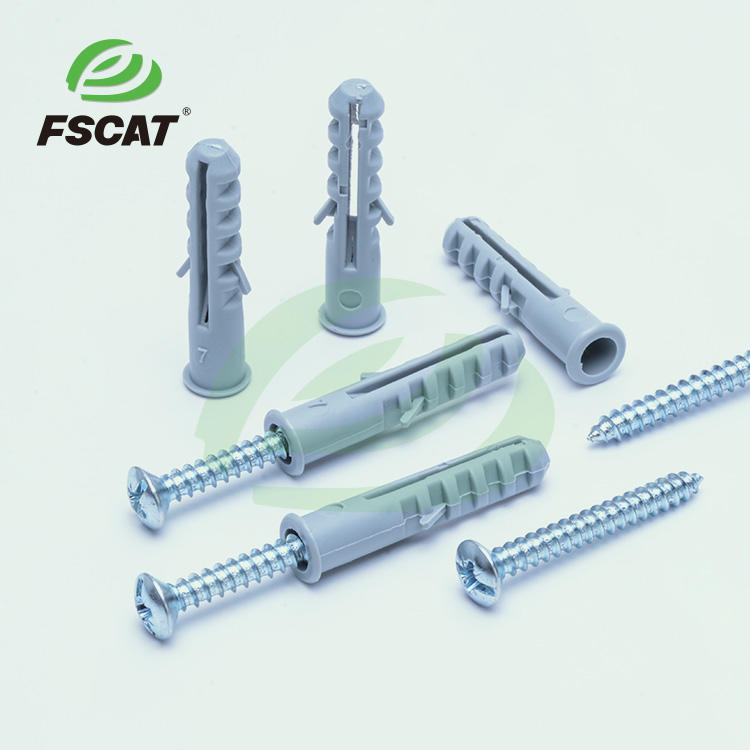The Multifaceted Applications of Cable Ties
Cable ties, also known as zip ties, are simple yet incredibly versatile fastening devices that have become an essential part of various industries and everyday life. These small, one - piece strips of material with locking mechanisms offer a convenient, secure, and cost - effective way to organize, bundle, and secure objects. Among the different types of cable ties, nylon cable ties are the most prevalent due to their durability, strength, and resistance to various environmental factors. In this article, we will explore the diverse applications of cable ties across multiple sectors.
Industrial Applications
Electronics and Electrical Systems
In the electronics industry, cable ties play a crucial role in cable management. With the increasing complexity of electronic devices and systems, there is a multitude of wires, cables, and connectors that need to be organized and secured. Cable ties are used to bundle together cables of the same type or function, preventing them from tangling and reducing the risk of damage. For example, inside a computer case, cable ties are employed to neatly arrange power cables, data cables, and fan cables. This not only improves the aesthetics of the internal components but also enhances the airflow, which is essential for maintaining optimal operating temperatures.
In electrical installations, such as in data centers, telecommunications facilities, and power distribution systems, cable ties are used to route and secure electrical cables. They help in keeping the cables in place, preventing them from sagging or coming into contact with other objects, which could lead to short circuits or electrical failures. Additionally, cable ties are used to label cables, with identification tags attached to them, making it easier for technicians to identify and troubleshoot different circuits.
Automotive Manufacturing
The automotive industry relies heavily on cable ties for various purposes. Under the hood of a car, there are numerous electrical wires, hoses, and tubing that need to be organized and secured. Cable ties are used to bundle these components together, ensuring they do not interfere with the movement of engine parts or get damaged by vibration. They also help in maintaining the integrity of the electrical system by preventing wires from rubbing against each other, which could cause insulation damage and electrical shorts.
In the interior of vehicles, cable ties are used to secure wiring harnesses, audio cables, and other electrical components. This helps in reducing noise, vibration, and harshness (NVH) levels, providing a more comfortable driving experience. Moreover, during the assembly process, cable ties are used to hold parts in place temporarily, making it easier for workers to install and align components accurately.
Aerospace and Aviation
In the aerospace and aviation industry, where safety and reliability are of utmost importance, cable ties are used to manage and secure cables, wires, and hoses in aircraft. The high - vibration and high - temperature environment of an aircraft require cable ties that can withstand these harsh conditions. Nylon cable ties with flame - retardant properties are commonly used in aircraft to ensure that in case of a fire, the ties do not contribute to the spread of flames.
Cable ties are also used to organize and secure avionics systems, which are critical for the navigation, communication, and control of the aircraft. By keeping the cables and wires neatly arranged, it becomes easier for maintenance personnel to inspect, repair, and upgrade these systems, minimizing downtime and ensuring the safety of passengers and crew.
Construction and Building
In construction projects, cable ties are used for a variety of purposes. They are used to secure electrical wires and cables during the installation of electrical systems in buildings. This helps in ensuring that the wiring is properly organized and protected, reducing the risk of electrical hazards. Cable ties are also used to hold plumbing pipes in place, especially during the initial installation or when making repairs. They can be used to secure insulation materials around pipes, preventing heat loss or gain.
In addition, cable ties are used in the construction of temporary structures, such as scaffolding. They are used to secure the pipes and tubes that make up the scaffolding framework, ensuring its stability and safety. Cable ties are also useful for bundling and organizing construction materials on - site, keeping the work area clean and organized.

Everyday Applications
Home and Office Organization
At home and in the office, cable ties are a handy tool for organizing cables and cords. With the proliferation of electronic devices, such as computers, smartphones, tablets, and gaming consoles, there are often a mess of cables behind desks and entertainment centers. Cable ties can be used to bundle these cables together, hiding them from view and making the area look neater and more organized. They can also be used to secure cables to the back of furniture or along walls, preventing them from getting tangled or tripping hazards.
In addition to cable management, cable ties can be used for other organizational tasks. For example, they can be used to hold together groups of files or documents, making it easier to store and access them. They can also be used to secure items during storage, such as bundling together tools in a toolbox or organizing items in a storage shed.
Gardening and Horticulture
In gardening, cable ties have several practical uses. They are used to support plants, such as tying young saplings to stakes to help them grow straight. Cable ties can also be used to secure climbing plants to trellises or fences, allowing them to grow and spread in the desired direction. They are useful for bundling together branches of plants, especially during pruning or when protecting plants from strong winds.
Cable ties are also used in irrigation systems to secure hoses and pipes in place, ensuring a consistent water supply to plants. They can be used to hold together drip irrigation lines, preventing them from moving or getting disconnected.
Arts and Crafts and DIY Projects
Cable ties are a popular choice in arts and crafts and DIY projects due to their versatility. They can be used in jewelry making, for example, to create unique and interesting designs. Cable ties can be painted, decorated, and combined with other materials to make bracelets, necklaces, and other accessories.
In DIY projects, cable ties are used for a wide range of tasks, from building small structures to repairing broken items. They can be used to hold together pieces of wood, plastic, or metal temporarily during assembly, or to reinforce weak joints. Cable ties can also be used in creative ways, such as making sculptures or decorations, adding an unconventional touch to the projects.
In conclusion, cable ties are incredibly versatile tools with a vast array of applications across different industries and in everyday life. Whether it's organizing cables in a high - tech data center, securing components in a car engine, or simply tidying up the cables behind your TV at home, cable ties offer a reliable and convenient solution. Their simplicity, affordability, and effectiveness make them an indispensable item in the toolkit of professionals and hobbyists alike. As technology continues to evolve and new challenges arise, the uses of cable ties are likely to expand even further, solidifying their place as an essential part of modern life.






